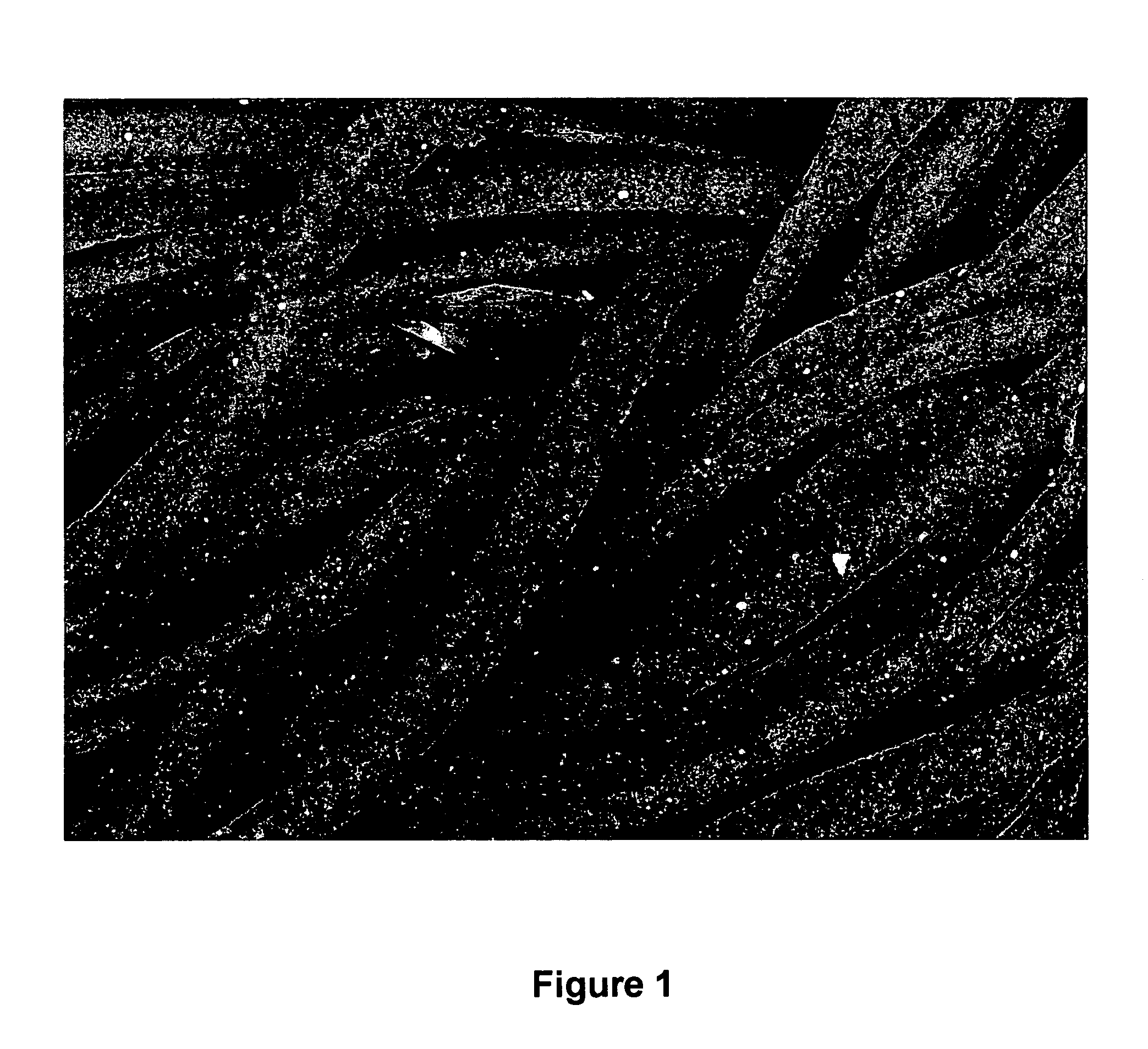Device for cleaning tooth and gum surfaces
a technology for cleaning teeth and gums, applied in the field of teeth and gum surfaces cleaning devices, can solve the problems of not teaching or suggesting, limited to the preparation of coated fibers and textiles, and not teaching or suggesting
- Summary
- Abstract
- Description
- Claims
- Application Information
AI Technical Summary
Problems solved by technology
Method used
Image
Examples
example 2
Preparation of Fibers and Fabrics from Treated Polymeric Materials
[0068] A1. A polymeric material is chosen for the desired end use. Such fibers as polyetrafluoroethylene PTFE, polyurethane PR, polyalkylenes such as polypropylene and polyethylene PE, polyvinyl chloride PVC, polyester PET PDT, polyolefin, polyamides such as nylon 6, nylon 66, nylon 666, acrylic, polybutylene, PLA-2-methylaspartul-pyridoxal-5p-phosphate, PTT, LD / HD / Linear Low Density including thermo set products, silicones. etc. are among the fibers that can be used. The fiber can be formed into either a filament form or short staple form.
[0069] A2. A master batch is prepared using the same base material as the desired yarn into which a copper oxide powder is added. For most textile end uses the master batch may have a 20% -40% concentration of the copper oxide powder included in it. This master batch will be added to the polymer being extruded and diluted so that only about 1% or 2% of the material will be in the ...
example 3
Anti-Bacterial Testing
[0073] Bacteria were taken from the mouth cavity of two different AminoLab employees and were designated “mouth bacterial A” and “mouth bacterial B”. The bacteria were grown until a significant stock titer was achieved. Then an AATCC test method 100 was conducted using textile materials made of 100% polyester yarn prepared according to example 2 A.2, and having 1% Cu++ releasing, discreet, water insoluble copper oxide particles incorporated therein.
[0074] Table A sets forth the results of a polyester textile fabric prepared having 1% CU++ releasing discreet, water insoluble copper oxide particles according to the present invention and table B sets forth the control results.
TABLE ATest results:TestAminolabTime 0After 4 hoursMicroorganismSample IDNo.CFU / SampleLogCFU / SampleLogMouthTextile madeM41346.043.0 × 1055.487.0 × 1033.85Bacterial Afrom 100%polyesteryarn havingpolymericfibers treatedwith waterinsolubleCopper oxideMouthTextile madeM41346.049.7 × 1055.996....
PUM
 Login to View More
Login to View More Abstract
Description
Claims
Application Information
 Login to View More
Login to View More - R&D
- Intellectual Property
- Life Sciences
- Materials
- Tech Scout
- Unparalleled Data Quality
- Higher Quality Content
- 60% Fewer Hallucinations
Browse by: Latest US Patents, China's latest patents, Technical Efficacy Thesaurus, Application Domain, Technology Topic, Popular Technical Reports.
© 2025 PatSnap. All rights reserved.Legal|Privacy policy|Modern Slavery Act Transparency Statement|Sitemap|About US| Contact US: help@patsnap.com

